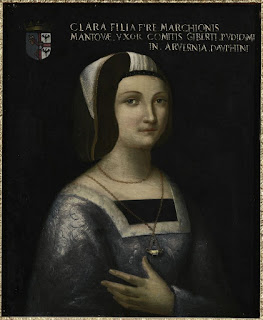Roberto Locatelli - motorcycle racer
World champion who survived horror crash
The former world 125cc motorcycling champion Roberto Locatelli was born on this day in 1974 in the Lombardy city of Bergamo. Locatelli won the 125cc title in 2000, riding an Aprilia for the Vasco Rossi Racing team, winning the Grand Prix of Malaysia, Italy, the Czech Republic, Spain and Japan to finish top of the standings, ahead of the Japanese rider Yoichi Ui. He finished third in the standings in 2004, his next best performance, but because of the rule excluding riders over the age of 28 from competing in the 125cc class was obliged to focus on the 250cc category. He enjoyed some success racing with the Toth team, obtaining two podium finishes in the 2006 season, including second place in Valencia, to finish fifth overall. The achievement won him a contract to ride for Gilera in 2007. However, while practising for the Spanish Grand Prix in Jerez in March 2007 Locatelli suffered an horrific crash, losing control of his bike and slammed into a trackside tyre wall at an estimated speed of 150kph (93mph). He was taken to Cadiz hospital and placed in a medically-induced coma. Read more...
__________________________________________________________________
Paolo Rossi's World Cup hat-trick
Spain 1982: Italy defeat Brazil in classic match
Italians were celebrating up and down the country on this day in 1982 as striker Paolo Rossi turned from villain to hero with a magnificent hat-trick to knock hot favourites Brazil out of the World Cup finals in Spain. The Juventus forward had served a two-year suspension for his role in an alleged match-fixing scandal while on loan with Perugia and was a controversial choice for the World Cup by Italy coach Enzo Bearzot. He had returned to action in Serie A late in the 1981-82 season after his ban was lifted less than six weeks before the finals were due to begin. Critics argued that with so little preparation time he could not possibly be match fit. Boasting stars such as Zico, Falcão, Éder and Sócrates, the 1982 Brazil side needed only to avoid defeat against Italy in their final match in the second group phase in the Estadio Sarrià in Barcelona to reach the semi-finals. Italy, by contrast, had been uninspiring, scraping through their first-round group without winning a match. Yet, inspired by Rossi, they produced one of the most memorable performances by the Azzurri of all time. Read more…
_________________________________________________________________
Giovanni Sforza – Lord of Pesaro and Gradara
Military leader was briefly married to Lucrezia Borgia
Giovanni Sforza d’Aragona was born on this day in 1466 in Pesaro in the region of Le Marche. The illegitimate son of Costanzo I Sforza, Giovanni became part of the powerful Sforza family and inherited his father’s titles when he was just 17, as Costanzo I died leaving no legitimate children. Giovanni Sforza is mainly remembered for being the first husband of Lucrezia Borgia, but he was also a condottiero - a professional army commander - who fought military campaigns and ruled over Pesaro and Gradara from 1483 until his death. In 1489 Sforza married Maddalena Gonzaga, the daughter of Federico I of Mantua, but she died the following year. As Giovanni was related to the Sforza branch who ruled the Duchy of Milan, he was regarded as a valuable connection by the Borgias and with the help of Giovanni’s cousin, Cardinal Ascanio Sforza, the Borgias arranged a marriage between Giovanni, who was by then in his twenties and Lucrezia, the 12-year-old illegitimate daughter of the Borgia pope, Alexander VI. A proxy marriage took place on 12 June 1492 but it was annulled five years later after Giovanni’s importance to the Borgia family dwindled. Read more…
_________________________________________________________________
Gianfranco Zola – footballer
Brilliant forward voted Chelsea’s all-time greatest player
Gianfranco Zola, a sublimely talented footballer whose peak years were spent with Napoli, Parma and Chelsea, was born on this day in 1966 in the Sardinian town of Oliena. Capped 35 times by the Italian national team, Zola scored more than 200 goals in his club career, the majority of them playing at the highest level, including 90 in Italy’s top flight – Serie A – and 58 in the English Premier League. He specialised in the spectacular, most of his goals resulting from his brilliant execution of free kicks or his dazzling ball control. Zola went on to be a manager after his playing career ended, although he has so far been unable to come anywhere near matching his achievements as a player. He was probably at his absolute peak during the seven years he spent playing in England with Chelsea, whose fans named him as the club’s greatest player of all time in a poll conducted in 2003, shortly before he left to return to Sardinia. However, it was probably the four years he spent with Napoli, his first Serie A club where he was understudy to Diego Maradona, that were his making as a player. Read more…
Home
























